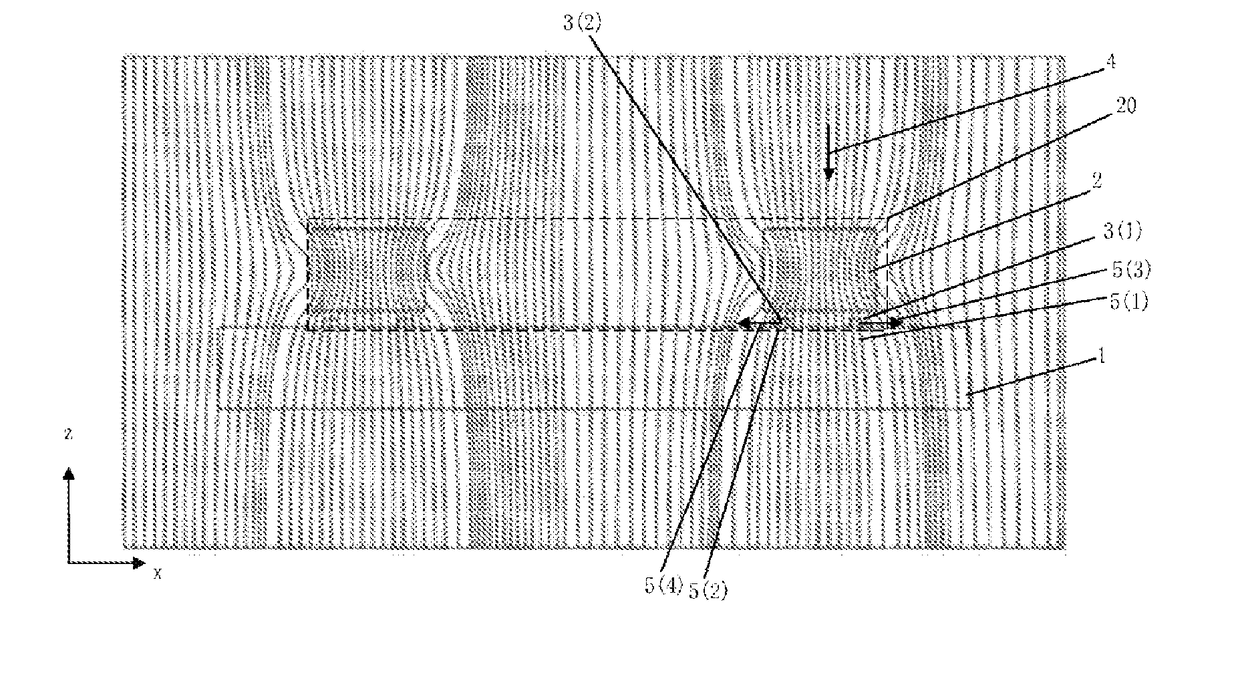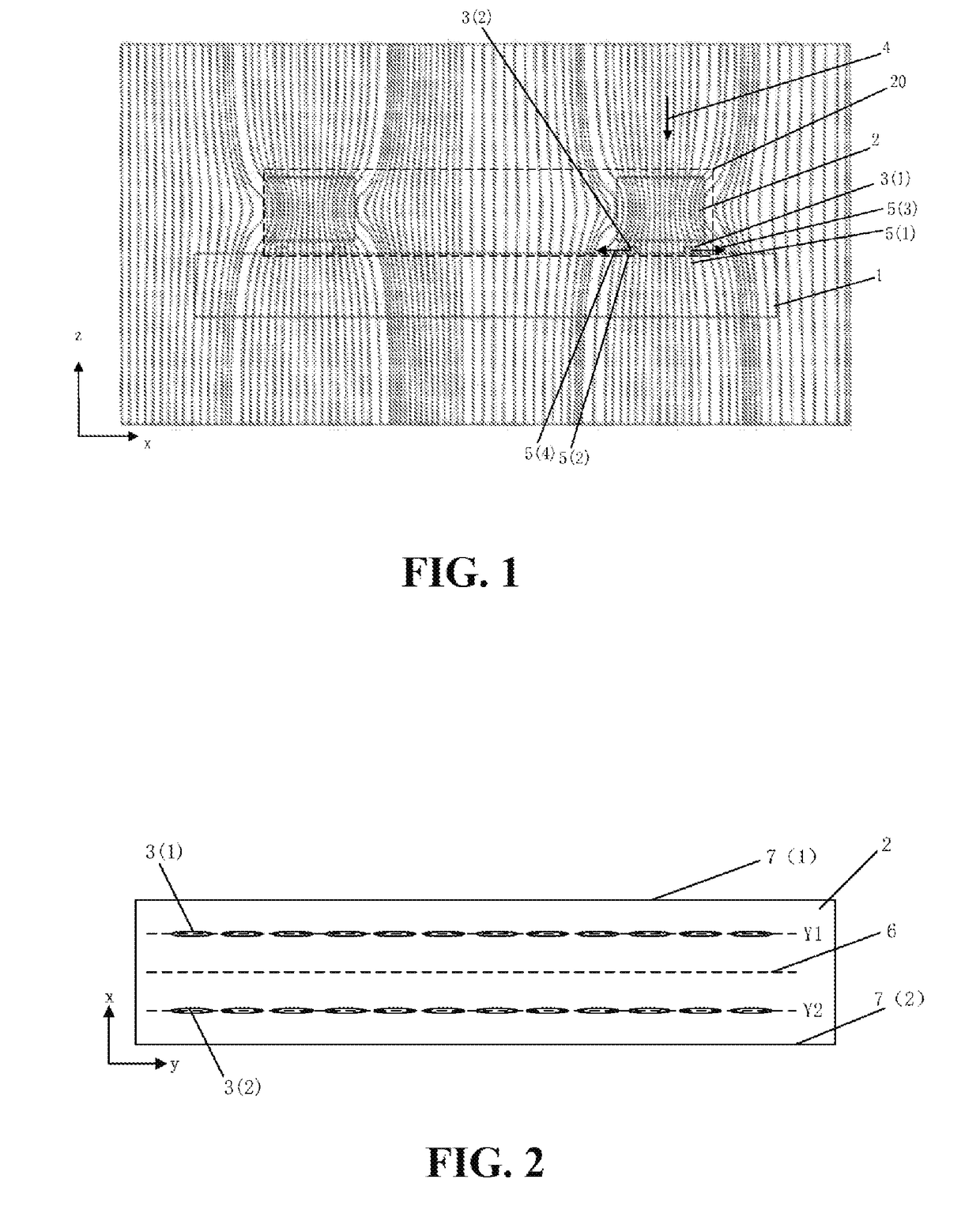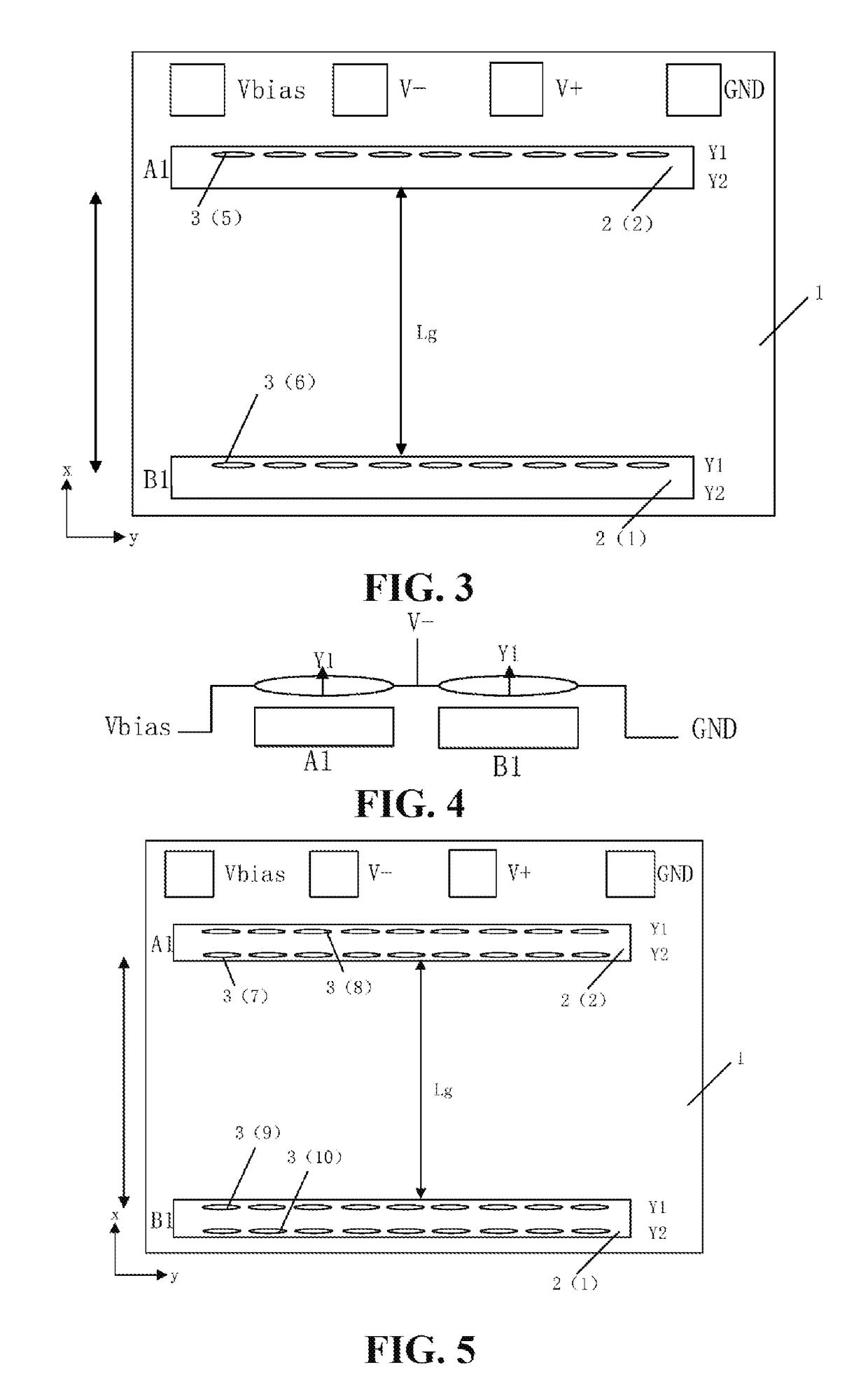Magnetoresistive z-axis gradient sensor chip
a gradient sensor and magnetoresistive technology, applied in the field of magnetosensing devices, can solve the problems of large size, low sensitivity of hall effect sensors, and uneven magnetic fields generated on the surface, and achieve the effects of reducing power consumption, improving sensitivity, and improving sensitivity
- Summary
- Abstract
- Description
- Claims
- Application Information
AI Technical Summary
Benefits of technology
Problems solved by technology
Method used
Image
Examples
first embodiment
[0047]FIG. 1 is a schematic diagram of a magnetoresistive Z-axis gradiometer chip, including a Si substrate 1 and a magnetoresistive Z-axis sensor 20. The magnetoresistive Z-axis sensor 20 is located on the Si substrate 1. The magnetoresistive Z-axis sensor includes two or two groups of multiple flux guide devices 2 and magnetoresistive units 3 (which include 3(1) or 3(2) in the figure). The magnetoresistive units 3 are located above or below the flux guide devices 2. For simplification, this figure only shows the situation where the magnetoresistive units 3 are located below the flux guide devices 2, and actually the situation where the magnetoresistive units 3 are located above the flux guide devices 2 is also included. The magnetoresistive units 3 are electrically connected into a half bridge or full bridge structure gradiometer. FIG. 1 further shows the principle of measurement of a Z-axis magnetic field. After the Z-axis magnetic field 4 passes through the flux guide devices 2,...
second embodiment
[0050]FIG. 3 and FIG. 4 are diagrams of another type of magnetoresistive Z-axis half bridge gradient sensor chip and electrical connections thereof, in which magnetoresistive units 3 (5) and 3 (6) on two bridge arms of a half bridge are located in the flux guide devices A1 and B1, respectively and occupy the same position: magnetoresistive units 3 (5) and 3 (6) are located at Y1 or Y2. For ease of description, FIG. 3 and FIG. 4 only show the situation where they are located at Y1, and they have the same magnetic field sensing direction. In this case, a half bridge output signal may be calculated in the following manner:
[0051]After a Z-axis magnetic field HZ passes through the flux guide devices, an X-axis magnetic field HX is obtained, and a correlation between HZ and HX is:
HX1=HZ1*SXZ (1)
HX2=HZ2*SXZ (2)
[0052]where SXZ is a magnetic field conversion parameter of the flux guide devices, which is related to the geometric structure and material property of the flux guide devices, HZ...
third embodiment
[0058]FIGS. 5-7 are a schematic structural diagram of a full-bridge-structure gradient sensor chip and diagrams of five types of electrical connections between magnetoresistive units corresponding thereto. In FIG. 5, the respective positions Y1 and Y2 corresponding to the flux guide devices A1 and B1 are occupied by magnetoresistive units 3(7)-3(10) corresponding to four bridge arms of the full bridge, respectively. In FIG. 6, two half bridges of the full bridge are corresponding to the flux guide devices A1 and B1, respectively. The magnetoresistive units at the positions Y1 and Y2 of each flux guide device have the same magnetic field sensing direction, and magnetoresistive units of two bridge arms connected to an electrode have the same magnetic field sensing direction. The output signal of the full bridge structure gradient sensor chip shown in FIG. 5 is as shown by the formulas (5)-(7), and the measured gradient of the Z-axis magnetic field is as shown by the formula (8):
V−=HX1...
PUM
 Login to View More
Login to View More Abstract
Description
Claims
Application Information
 Login to View More
Login to View More - R&D
- Intellectual Property
- Life Sciences
- Materials
- Tech Scout
- Unparalleled Data Quality
- Higher Quality Content
- 60% Fewer Hallucinations
Browse by: Latest US Patents, China's latest patents, Technical Efficacy Thesaurus, Application Domain, Technology Topic, Popular Technical Reports.
© 2025 PatSnap. All rights reserved.Legal|Privacy policy|Modern Slavery Act Transparency Statement|Sitemap|About US| Contact US: help@patsnap.com



